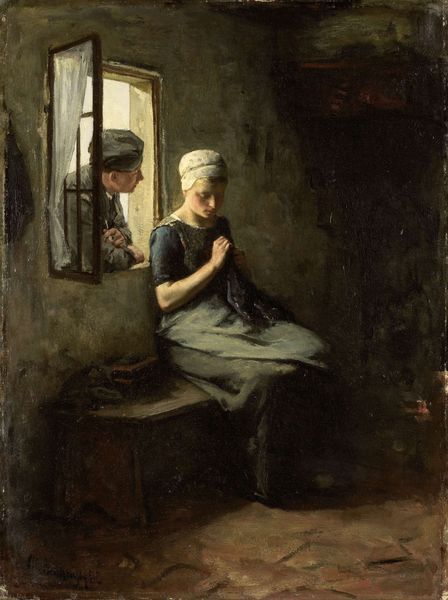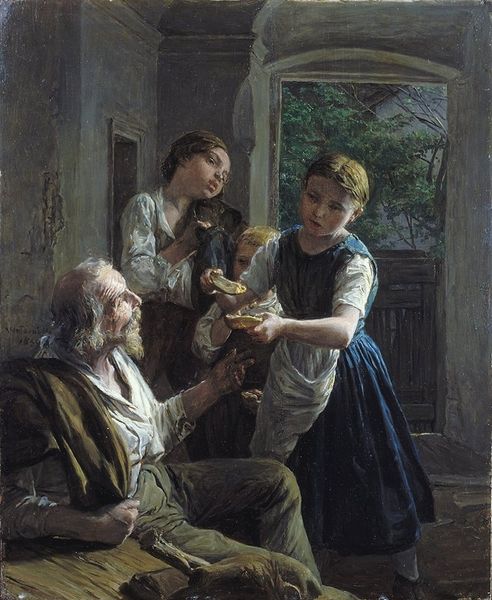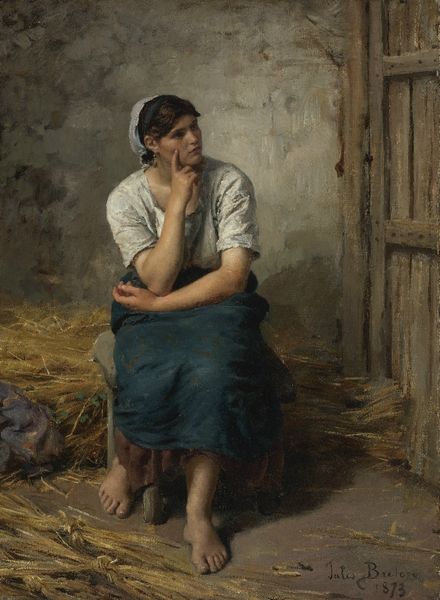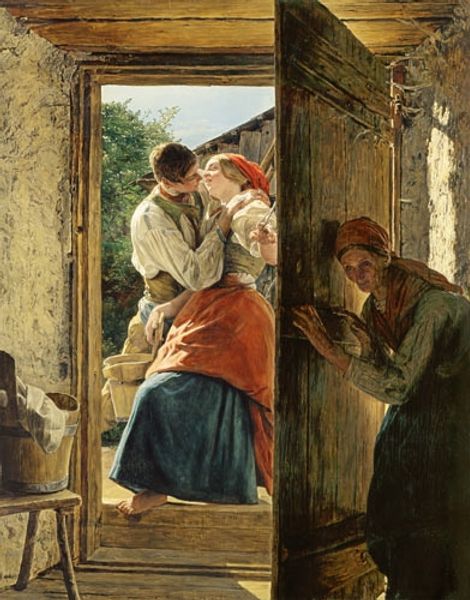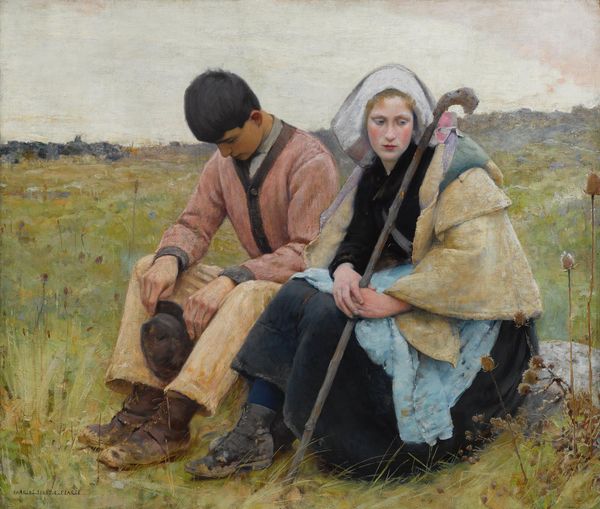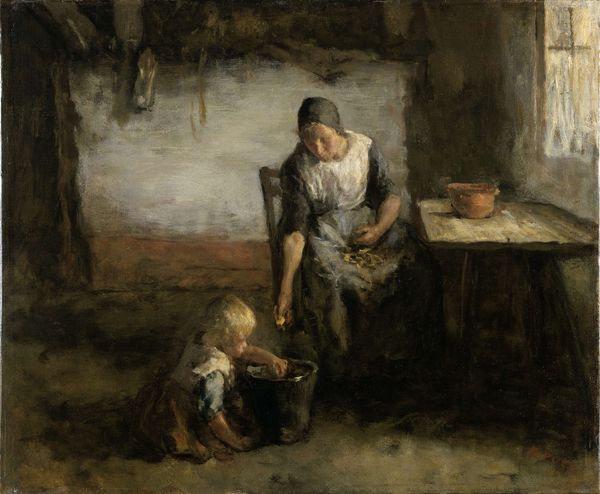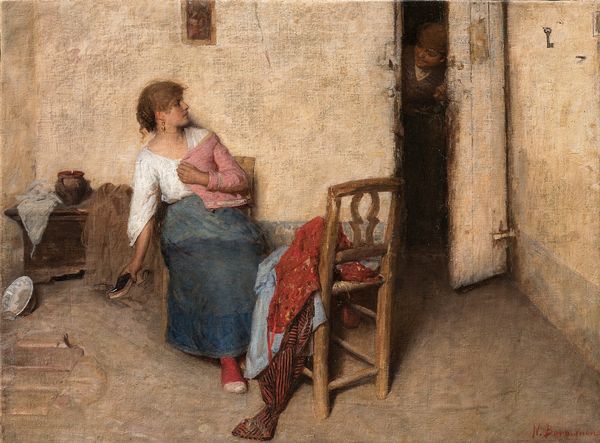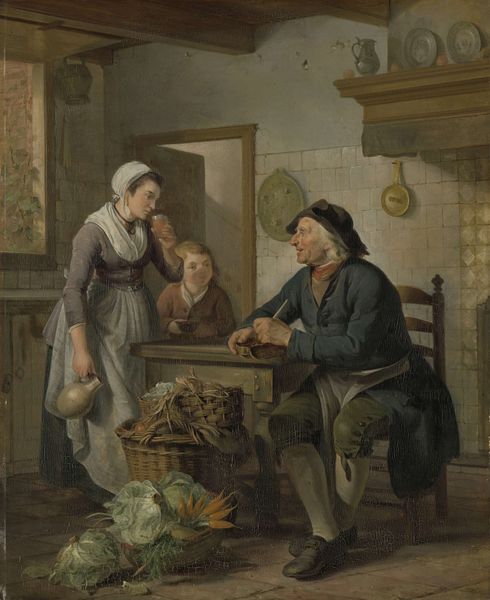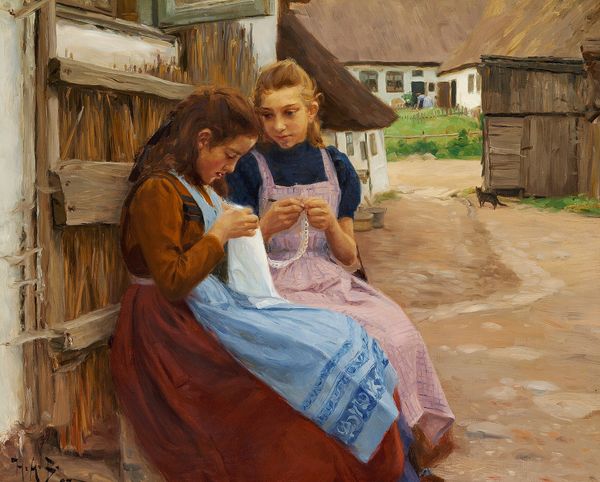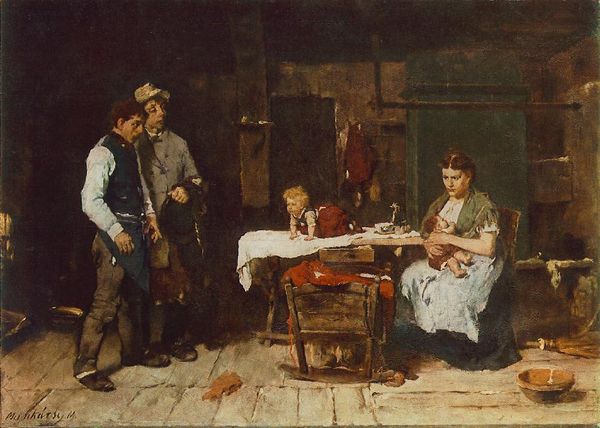
oil-paint
#
portrait
#
oil-paint
#
oil painting
#
genre-painting
#
realism
Copyright: Modern Artists: Artvee
Curator: This is Norman Rockwell's "The Lighthouse Keeper's Daughter," painted in 1923. Immediately, the focus is on the interaction between the older man and the young girl seated together on the bench. Editor: My first thought is about the quiet dignity Rockwell captures here. It’s a muted palette, dominated by heavy, dark clothing, giving it a solemn feeling. The labor seems very present—the visible mending of the clothing... the hard-worn face of the lighthouse keeper. Curator: Rockwell's genius lies in capturing a specific cultural moment, an idealized vision of American life that spoke to a burgeoning middle class. Here, the setting of the painting gives the piece an element of isolation from the culture of consumerism during this time. We’re invited into a domestic scene far removed from the urban experience, showing viewers something timeless, even old-fashioned. Editor: I agree. It emphasizes a direct relationship with necessity, particularly around making and mending. This little girl's bare feet next to her grandfather’s worn boots... There’s a strong emphasis on their relationship to physical labor here; the oil paint emphasizes textures, giving a sense of weight. Curator: Exactly. Note how the man's gaze is fixed on her, this silent approval of the craft passed down. It portrays familial duty—the little girl patching up a practical piece of clothing for a life centered around manual labor. Consider the intended audience, it really romanticizes traditional gender roles during this time. Editor: True, it’s very traditional. It reminds us of the practicality needed to survive, showing domestic craft as an essential skill and the family’s interdependence. Think of all that this skill can give to someone as they grow up. Curator: The work, though realist in style, presents an interesting view of an American family dynamic from a bygone era and invites discussion about the impact and celebration of different jobs during a rapidly changing America in the early 20th century. Editor: Ultimately, this painting provides such a poignant visual exploration of family ties, and manual labor within a historical context, it prompts questions around traditional trades and how people survive within those confines.
Comments
No comments
Be the first to comment and join the conversation on the ultimate creative platform.

